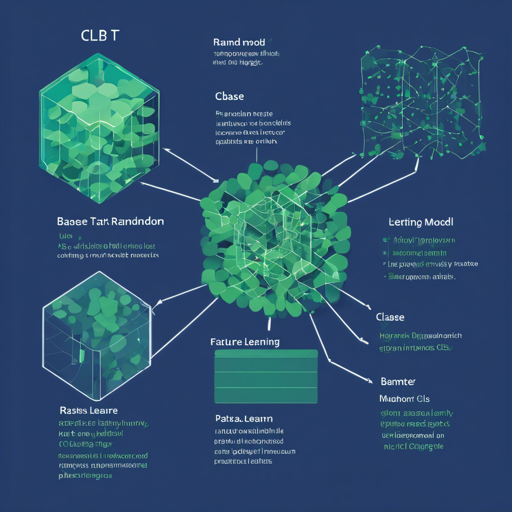Welcome to our guide on using the CLMBR-T-Base-Random model, a fantastic tool for those diving into the realms of healthcare data analysis. This blog will walk you through the process of setting up the model, running inference, and troubleshooting common issues!
Understanding the CLMBR-T-Base-Random Model
The CLMBR-T-Base-Random model is a simplified version of a more complex system developed for analyzing electronic health records (EHRs). Think of it as a practice canvas for artists before they paint a masterpiece—this model uses random weights and is designed merely for testing purposes. Its architecture, known as CLMBR, is important in the healthcare domain as it helps generate dense representations from EHR data.
How to Get Started with the CLMBR-T-Base-Random Model
Step 1: Set Up Your Environment
Start by creating a clean python environment and installing the necessary libraries:
# Create Python 3.10 environment
conda create --name ehrshot_env python=3.10 -y
conda activate ehrshot_env
# Install requirements
pip install torch==2.1.1 femr==0.2.0 datasets==2.15.0 flash_attn==2.3.6 transformers==4.35.2
Step 2: Run Inference
Next, run the following Python script. This will allow you to perform inference using the model:
import femr.models.transformer
import torch
import femr.models.tokenizer
import femr.models.dataloader
import datetime
model_name = "StanfordShahLab/clmbr-t-base-random"
# Load tokenizer & batch loader
tokenizer = femr.models.tokenizer.FEMRTokenizer.from_pretrained(model_name)
batch_processor = femr.models.dataloader.FEMRBatchProcessor(tokenizer)
# Load model
model = femr.models.transformer.FEMRModel.from_pretrained(model_name)
# Create an example patient to run inference on
example_patient = {
'patient_id': 30,
'events': [
{'time': datetime.datetime(2011, 5, 8), 'measurements': [{'code': 'SNOMED1'}]},
{'time': datetime.datetime(2012, 6, 9), 'measurements': [{'code': 'SNOMED30'}, {'code': 'SNOMED103'}]},
]
}
batch = batch_processor.convert_patient(example_patient, tensor_type='pt')
# Run model
with torch.no_grad():
patient_ids, times, reprs = model(batch)
print(patient_ids)
print(times)
print(reprs)
Model Uses
This model creates random dense representations for patient data derived from electronic health records. These representations could theoretically aid in predicting diagnoses, detecting anomalies, or performing causal inference—albeit with the caveat that with random weights, the outputs are meaningless.
Troubleshooting Common Issues
- Installation Errors: Ensure you have the required version of Python and libraries installed. It helps to create a fresh Python environment to avoid conflicts.
- Model Not Loading: Check if the model name is correctly referenced. Ensure you have an internet connection as the model is fetched from the cloud.
- Unexpected Outputs: Remember, this model is not trained and returns random outputs. Always treat the results with caution and confirm you’re utilizing a version meant for practical applications.
- Python Not Recognized: Ensure your Python environment is active. If you’re using Anaconda, make sure to activate it using `conda activate ehrshot_env`.
For more insights, updates, or to collaborate on AI development projects, stay connected with fxis.ai.
Conclusion
With the CLMBR-T-Base-Random model, you have a foundational stepping stone into more advanced AI methodologies applied to healthcare. Keep in mind that this model’s primary function is educational—it is an excellent way for engineers and researchers to familiarize themselves with the mechanics of CLMBR without handling sensitive real-world data.
At fxis.ai, we believe that such advancements are crucial for the future of AI, as they enable more comprehensive and effective solutions. Our team is continually exploring new methodologies to push the envelope in artificial intelligence, ensuring that our clients benefit from the latest technological innovations.

